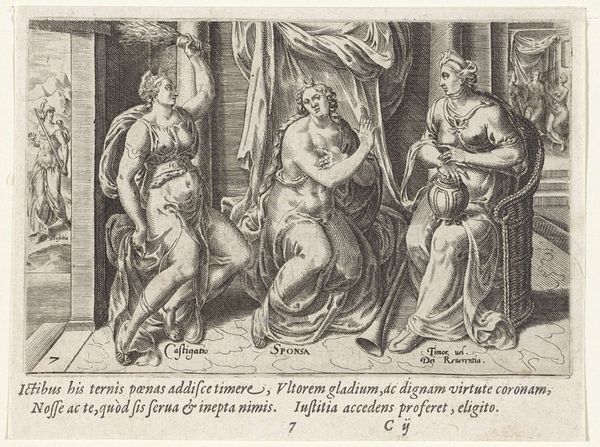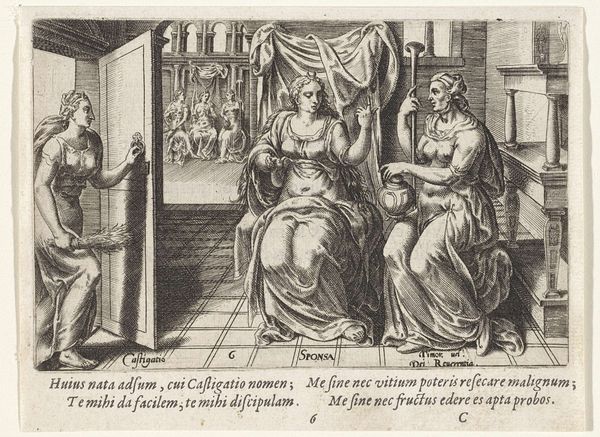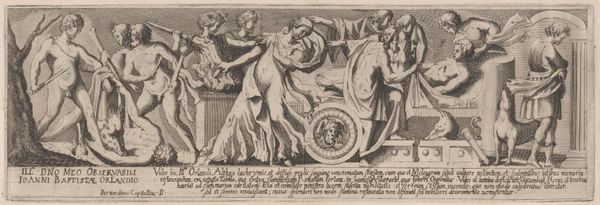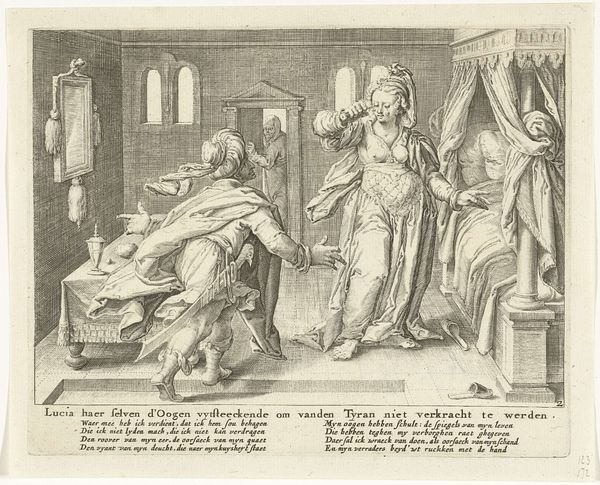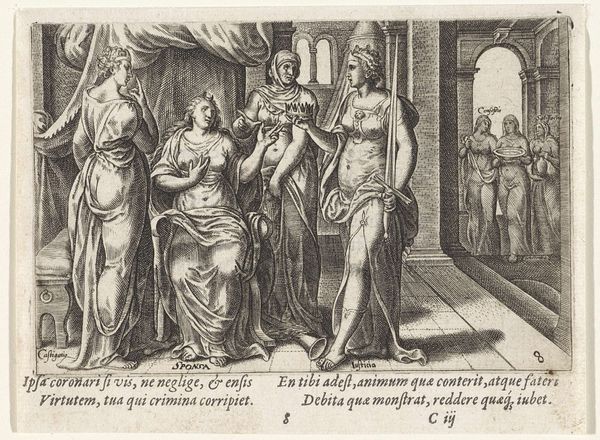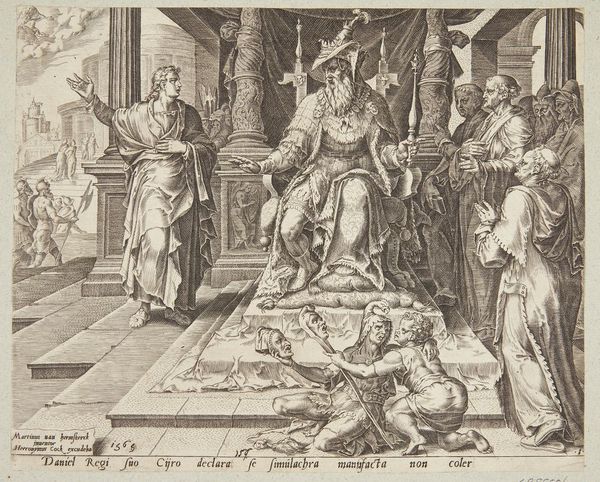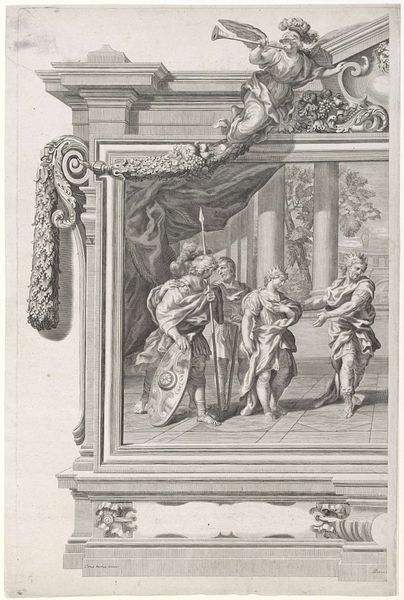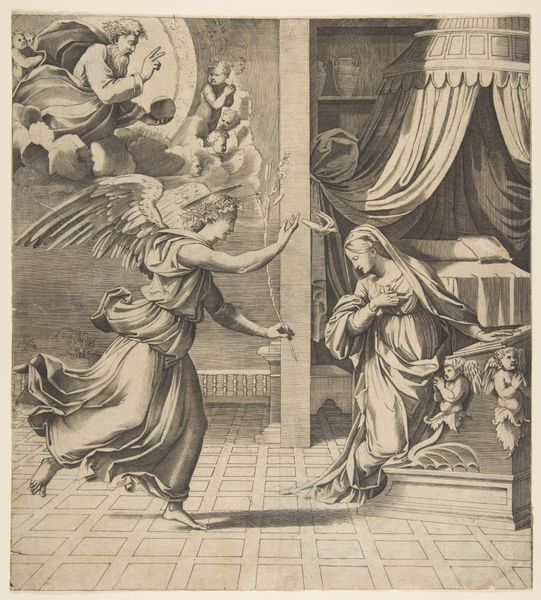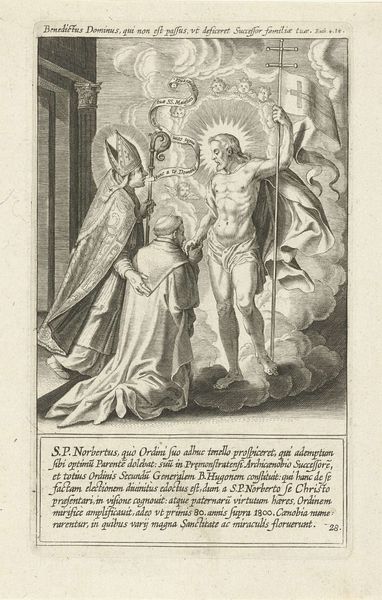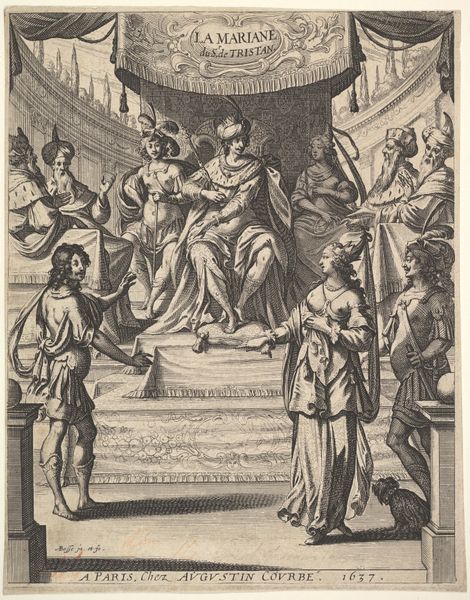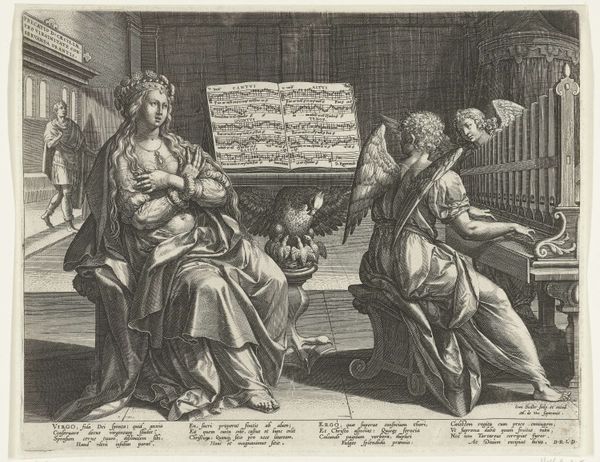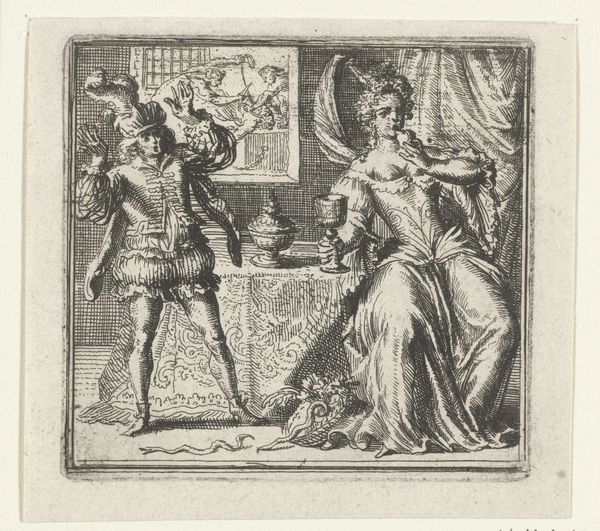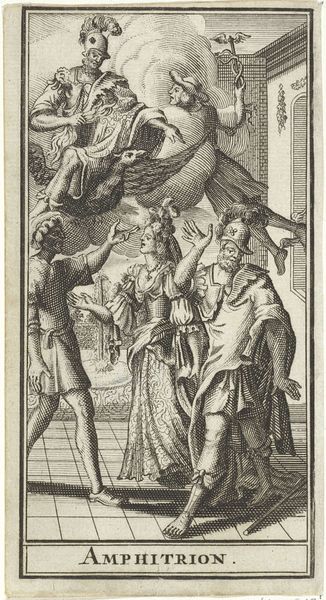
drawing, print, ink, engraving
#
portrait
#
drawing
#
allegory
# print
#
figuration
#
ink
#
line
#
history-painting
#
northern-renaissance
#
engraving
Dimensions: height 91 mm, width 139 mm
Copyright: Rijks Museum: Open Domain
Curator: Here we have a work by Wierix, an engraving from 1574 entitled, "Godsvrucht bezoekt de bruid"—"The Fruit of God Visits the Bride." It’s currently held at the Rijksmuseum. Editor: Oh, how fascinating! The mood hits me immediately. It’s imbued with a rather stern and pious seriousness, don’t you think? Almost like a stage tableau… all these figures rendered with such fine lines! Curator: The stark contrasts certainly heighten the allegorical feel. This piece fits into a long tradition of visually representing complex theological concepts—marriage to God, virtue… They weren’t simply ideas but tangible presences to people then. Editor: Look, to me the messenger on the left seems much more imposing—maybe that's the ‘Godsvrucht’ you mentioned? It’s so wonderfully detailed, and I suppose there’s this whole business of earthly temptation at play here too, looking at her loose gown, with her foot appearing so vividly underneath it. Curator: Yes! The figure is "Fear of God"—and you're correct about her clothing. This print embodies the spiritual ideals of the era, particularly how earthly desires must take a subordinate position in life, in anticipation of salvation. Editor: Ah, there’s some clever theatrical staging—God’s Fear is blowing this massive horn to make us—and that introspective bride in her chair—notice something. But why is the horn engraved with what appears to be "VE VE VE"? It looks so unusual on what’s apparently an illustration of biblical text. Curator: The word inscribed on the horn is an abbreviation of "Venite," Latin for "come," implying an invitation to contemplate death and, crucially, repent one's sins. Editor: Repent, come. Such dark, weighty reminders seem heavy indeed for what’s essentially supposed to be a bridal celebration. That kneeling couple in the shadows to the right appear afraid! Curator: Perhaps, but remember that during this time the spiritual health of one’s soul far outweighed temporal earthly joys. The artist conveys moral rectitude, juxtaposing transience with permanence through potent symbolism. Editor: In any case, what stands out is the intense precision. I wonder how many attempts it took the artist to get that level of detail? It gives it a peculiar weight, a sense of something lasting that feels very...final. Curator: Yes, and it invites a continued contemplation. One can see, feel, experience how images truly serve as vessels of collective cultural meaning over time.
Comments
No comments
Be the first to comment and join the conversation on the ultimate creative platform.
